Dressing SHIP when under way or overall
Vessels only dress when in or near a harbour or anchorage and there are two ways to do this:
1. with masthead flags when under way, and
2. overall (rainbow fashion) when not under way.
Dressing with masthead flags
The flags flown are the Ensign in its normal place together with ensigns of the same size repeated at each masthead PLUS your burgee alongside the ensign at the main masthead. However, Flag officers fly only their broad pennants at the main masthead.
For a foreign festival, a Flag Officer replaces his courtesy flag at the starboard spreader with the appropriate foreign ensign (size as masthead). In addition, the burgee only is flown at the main masthead for local and club regattas.
Dressing overall
Flags as above adding dressing lines as prescribed below
Dressing lines consist of stringing the flags of the International Code from the stem head to the masthead, from the masthead to masthead (where the ship has more than one mast) and thence to the taffrail.
It is important that Ensigns, racing or other private flags should not be used on the dressing lines (i.e. the string of flags going overall), which should be confined to flags of the International Code of Signals.
In arranging the flags on the dressing lines, triangular flags and pendants should, as far as possible, be placed between rectangular flags (this cannot be done throughout, however, as there are not enough pendants and triangular flags).
Adjacent flags should be chosen to give as much contrast as possible, if the full complement of flags is unavailable. All vessels should, as far as possible, be dressed alike.
There is no official order for dressing flags but the following has come into use and is recommended
E, Q, p3, G, p8, Z, p4, W, p6, P, p1, I, Code, T, Y, B, X, 1st, H, 3rd , D, F, 2nd, U, A, O, M, R, p2, J, PO, N, p9, K, p7, V, p5, L, C, S.
In a single-masted vessel the divide at the masthead would be between the 3rd substitute and flag D. In a twin masted vessel flags from Y to O should be between the masts. (We can make up the flags in this order on request).
It is important that the size of the flags fits your vessel and that they are spaced correctly to fill the dressing lines.
*source: Royal Yachting Association 2010
In addition to the ship’s Colours (her Ensign) which should still be worn at its usual place, i.e. the Ensign staff on the taffrail, flags – generally Ensigns – should also be flown from each masthead when the ship is dressed.
It is important that there is a flag at each masthead, and the flags flown at the masthead should be in accordance with the following:
1. For British national festivals British Ensigns are flown at all mastheads; at the main masthead the Ensign and the club burgee are flown side by side. There is, however, an exception to this rule when the owner of the yacht is a Flag Officer of a yacht club. In that case, his personal flag is flown by itself at the main masthead without any Ensign. It follows, that if such a yacht is a single masted yacht, no masthead Ensign can be flown.
2. For foreign national festivals (either in British waters or abroad) an Ensign of the country in whose honour the ship is dressed is flown at the masthead. For schooners or yachts with more than two masts, the foreign Ensign is flown at the fore, for yawls and ketches at the mizzen, and for single-masted yachts it is flown at the main masthead alongside the club burgee. British Ensigns are flown at the other mastheads. Flag Officer broad pennants are always flown by themselves at the masthead. For a foreign festival a Flag Officer replaces his courtesy flag at the starboard spreader with the appropriate foreign ensign (size as masthead).
3. For local festivals, such as regattas, the club burgee should be flown at the main masthead with no Ensign. The owner’s house flag may also be flown in its usual place or, alternatively, an Ensign may be flown. An Ensign should also be flown at all other mastheads where no other flag is flying. In all the above cases, if the owner is entitled to wear the special Ensign of a privileged yacht club, he may fly either this Ensign at the masthead or a Red Ensign, but, should he elect to wear a special Ensign, the same special Ensign must be flown at the masthead. The special Ensign of one yacht club should never be flown from the masthead at the same time as the special Ensign of another yacht club is worn from the taffrail.
What do the boat flags mean?
Different flags for different boats..... there are different meanings for each flag depending on whether you’re using them internationally, as part of the US Navy, or as part of a sailing regatta. Here’s a list of the different ship flag meanings.
| Flag Name | Flag | International | Navy | Regatta |
| ALFA | 
|
I have a diver down; keep well clear at slow speed. | n/a | |
| BRAVO | 
|
I am taking in, discharging, or carrying dangerous cargo. | n/a | |
| CHARLIE | 
|
Yes or affirmative. | Change of course. | |
| DELTA | 
|
I am manouvering with difficulty; keep clear. | n/a | |
| ECHO | 
|
I am moving to starboard (right). | n/a | |
| FOXTROT | 
|
I have been disabled – please communicate with me; on aircraft carriers it means that flight operations are underway. | n/a | |
| GOLF | 
|
I need a pilot; for fishing boats, it means “I am hauling nets.” | n/a | n/a |
| HOTEL | 
|
I have a pilot on board (used as a response to “GOLF”) | n/a | n/a |
| INDIA | 
|
I am altering my course to port (left). | I am coming alongside you. | Indicates that the around-the-ends rule is in effect at the start. |
| JULIET | 
|
Keep well clear of me – I am on fire and/or leaking dangerous cargo | n/a | |
| KILO | 
|
I wish to communicate with you by:
Morse signaling by hand-flags or arms
|
n/a | |
| LIMA | 
|
You should stop immediately. | Ashore: A notice to the competitors has been posted. Afloat: Come within hail; follow me. |
|
| MIKE | 
|
My vessel is stopped. | This boat flag signals that the mark is missing and that all boats should round the boat bearing the flag. | |
| NOVEMBER | 
|
No/negative. | Abandonment and re-sail. | |
| OSCAR | 
|
Man overboard. | ||
| PAPA | 
|
In port: All sailors return to the ship; the vessel is going out to sea.
Fishing vessels at sea use this to signal that their nets are caught on something. |
All personnel return to the ship – the vessel is proceeding out to sea. | Used as a preparatory flag, this flag goes up four minutes before the start of the race. |
| QUEBEC (kway-bec) | 
|
The ship meets health regulations and is requesting clearance into port. | Boats are being recalled – all boats are to return to the ship. | n/a |
| ROMEO | 
|
n/a | At sea: Planning to replenish fuel or supplies. In port: Ready the duty ship. |
n/a |
| SIERRA (see-air-uh) | 
|
Moving astern (to the rear of the ship being signaled). | Conducting flag hoist drill. | This flag means that the regatta course has been shortened. The finish line is now between this flag and the nearest rounding mark. |
| TANGO | 
|
Keep clear of me – I am engaged in trawling. | Do not pass ahead of me. | n/a |
| UNIFORM | 
|
You are running into danger. | ||
| VICTOR | 
|
I require assistance. | ||
| WHISKEY | 
|
I require medical assistance. | ||
| X-RAY | 
|
Stop your intentions and watch for my signals. | Individual recall. | |
| YANKEE | 
|
I am pulling my anchor behind me. | The ship flying this flag is assigned to visual communications duty. | Wear life jackets. |
| ZULU | 
|
I require a tug. | 20% scoring penalty. | |
| ZERO |  |
|||
| ONE |  |
|||
| TWO |
 |
|||
| THREE |  |
|||
| FOUR |  |
|||
| FIVE |  |
|||
| SIX |  |
|||
| SEVEN |  |
|||
| EIGHT |  |
|||
| NINE |  |
|||
| 1ST REPEATER |  |
|||
| 2ND REPEATER |  |
|||
| 3RD REPEATER |  |
|||
| 4TH REPEATER |  |
|||
Using multi-flag signals
Knowing how to use the nautical flag system is hugely important when danger is imminent or communications break down. Flags can be seen easily when out on the open water, especially if you have a pair of binoculars. They don’t require Wi-Fi or other types of electrical signals, either: all you have to do is use a certain number of flags to signal exactly what you mean.
- Single-flag signals are used for urgent messages to other ships, such as signaling JULIET when your ship is leaking dangerous cargo.
- Two-flag signaling indicates distress or changes to maneuvers, such as signaling DELTA and then ECHO.
- Three-flag signals indicate relative bearings (the angle from the ship’s centerline heading to a straight line drawn from the observation station on the vessel to the object), compass points and are used as general code and decode signals.
- Signaling with four flags is used to relay absolute bearings and other geographical signals.
- Five-flag signals are used to relate time and position.
- Six-flag signals are used to relay latitude and longitude coordinates, as well as compass directions.
- Seven-flags are for longitude signals containing more than one hundred degrees.
In order to communicate using multi-flag signals, there is a second system of numbered flags indicating 0-9 (shown below).
| Number | NATO Flag | International Flag |
| 0/ZERO | 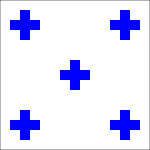 |
 |
| 1/ONE | 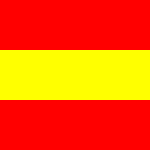 |
 |
| 2/TWO | 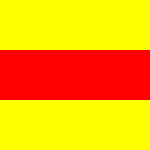 |
 |
| 3/THREE | 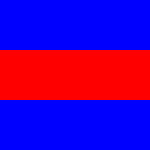 |
 |
| 4/FOUR | 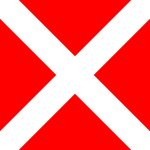 |
 |
| 5/FIVE | 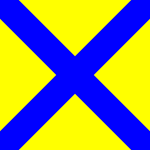 |
 |
| 6/SIX | 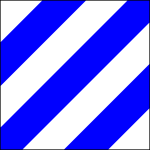 |
 |
| 7/SEVEN | 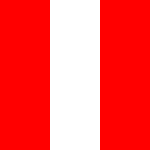 |
 |
| 8/EIGHT | 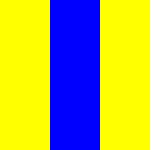 |
 |
| 9/NINE | 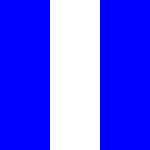 |
 |
Some of the original 26 nautical flags also have separate meanings when used with numbers:
- ALFA: Begin relaying an azimuth or bearing
- CHARLIE: I am relaying a course in degrees magnetic
- DELTA: I am relaying a date
- GOLF: Longitudinal coordinates (the first two numbered flags are degrees; the last two flags are minutes)
- KILO: See International/NATO.
- LIMA: Latitudinal coordinates (the first two flags show degrees; the last two show minutes)
- ROMEO: Distance from/range to an object in nautical miles
- SIERRA: Speed in knots
- TANGO: Local time (first two flags display hours; second set of flags shows minutes)
- VICTOR: Speed (Kilometers/hour)
- ZULU: Time in UTC (first two flags display hours; second set of flags shows minutes)
Using boat flags and nautical flags to start a regatta
When it comes to the starting sequence of a sailing regatta, there’s a specific type and number of nautical flags that need to be raised and lowered in order to signal different parts of the starting sequence of a sailing regatta.
To order any flag you need on this page, please use the search bar at the top of any webpage on our website to locate the product page.
If everything is on schedule, when you get out to the committee boat you will see an RC flag and an orange flag that delineates the committee boat end of the start line. If things are running late, you will see the previous two flags and the AP signal. That's a red and white pennant, which is also called the Answering Pennant.
Fun fact: The start sequence for sailboat races has been a five-minute countdown series since 2001. If your club is still using the old 10-minute system, someone needs to take the 21st century by the horns and get things modified.
| Flag Name | Flag | Meaning |
| Racing Committee flag | 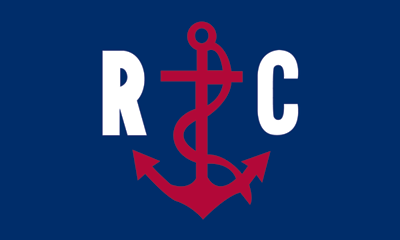 |
Used to show where committee boat end of the start line is. |
| Orange start flag |  |
Shows where the start line ends. Placed parallel to the committee boat on a buoy. |
| Answering pennant | 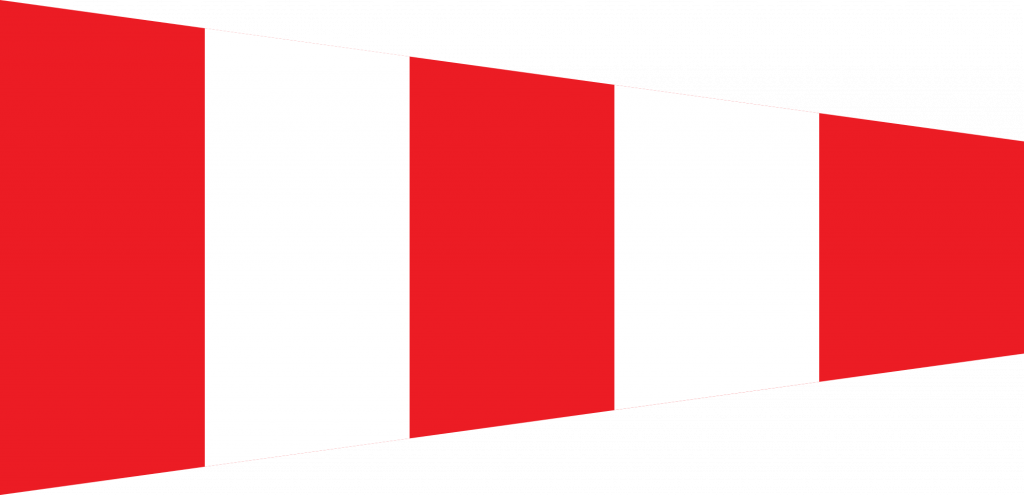 |
Used to tell the racers that the race has been postponed. |
| Class flag | N/A — outlined in the Sailing Instructions. | Alerts the racers that there’s five minutes to go before the race begins. |
| P flag |  |
Signals that there are four minutes left before the race begins. |
When the AP comes down, it signifies one minute until the class flag is raised. The class flag is the one which is so designated by the Sailing Instructions. So, at this point, there are six minutes until the start.
The Class Flag goes up at five minutes before the start and remains up until the start. This is a warning flag only. The Rules of Racing (RRS) don’t kick in for another minute. It is accompanied by a sound signal.
The P (Preparatory) flag goes up at four (4) minutes before the start. The P flag is blue with a white, square centre. It is accompanied by a sound signal. This flag will remain up for three minutes.
The P flag comes down at one minute before the start. It is accompanied by a sound signal. The only flag still up is the Class Flag.
START: The Class Flag comes down. It is accompanied by a sound signal. You should be at or very near the starting line going fast.
Other flags you'll need to consider
X: Blue cross on a white background. It means that one or more boats have started prematurely. The race committee may, but is not obligated to, inform the guilty boat(s). This flag will be lowered when all premature boats have returned or after 4 minutes, whichever comes first.
FIRST SUBSTITUTE: This is a triangular flag with blue edges top and bottom and a yellow centre. This flag indicates a General Recall. Everybody starts over. New start sequence, etc.
I: Yellow flag with solid black circle at centre. This indicates that Rule 30.1 (the around-the-ends rule) is in effect at the start.
BLACK FLAG: This flag is all black. It means that any boat on the course side of the start line within a minute prior to the start is disqualified.
Y: Diagonal red and yellow stripes. This flag means that all competitors are required to wear personal buoyancy.
L: Diagonal yellow and black squares, two each. Ashore, it means that a notice to competitors has been posted. Afloat, it means come within hail or follow me.
M: Blue Flag with white X. This flag means, "The mark is missing. Round me instead of the missing mark."
S: White with blue square. This flag means, "The course has been shortened. The finish is between this flag and the nearby rounding mark,"
C: Red, white and blue horizontal stripes. This flag means, "The course has been changed." Look for compass heading to new mark and/or + or - sign indicating leg will be longer or shorter.
N: Blue and white checkers. This flag means, "The race has been abandoned." It should be accompanied by 3 sound signals.
N over A: This combination means, "Races have been abandoned. Further signals will be made ashore."
(source: ALL ABOUT THOSE RACE COMMITTEE FLAGS (sarasotabayyachting.org)
Dates for dressing ship
The principal national festivals of Great Britain currently celebrated by dressing ship are:
- Accession Day
- Coronation Day
- HM The Queen’s birthday
- Commonwealth Day
- HM The Queen’s Official birthday (usually the first Saturday in June)
- HRH The Duke of Edinburgh’s birthday.
In addition to these fixed days, owners may wish to dress ship for any special private occasion and to follow the example of local vessels when away from their home port.
Foreign countries have their own national festivals which may be celebrated by dressing ship. Visiting yachts may, as a courtesy, follow the local customs.


